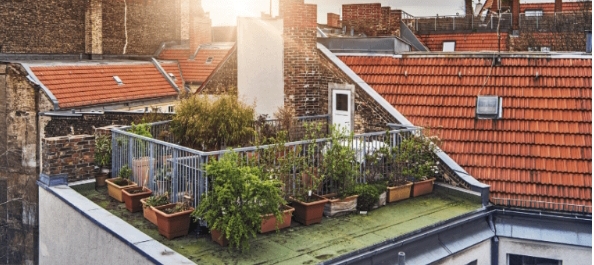Urban gardening has emerged as a powerful movement, turning city spaces into thriving green oases and addressing key challenges like food security, sustainability, and community connection. With urban populations growing and sustainability concerns rising, individuals are cultivating their
In recent years, urban gardening has blossomed into a global movement, transforming concrete jungles into vibrant patches of greenery. From rooftop gardens to community plots, city dwellers are rediscovering the joys of growing their own food, flowers, and herbs. This trend isn’t just about aesthetics—it’s a response to pressing environmental, social, and economic challenges.

As urban populations swell and concerns about sustainability intensify, urban gardening offers a practical, empowering solution for individuals and communities alike.
Why Urban Gardening Is Thriving
Urban gardening has gained traction for several reasons.
First, it addresses food security. In cities where access to fresh produce can be limited or expensive, growing your own vegetables ensures a steady supply of nutritious food. Tomatoes, lettuce, and herbs like basil can thrive in small spaces, making them ideal for balconies or window sills. This reduces reliance on industrial agriculture, which often involves long supply chains and significant carbon footprints.
Second, urban gardening fosters sustainability. By cultivating plants, city residents contribute to cleaner air, reduced urban heat, and increased biodiversity. Plants absorb carbon dioxide and release oxygen, while green spaces help regulate temperatures in densely built environments. Moreover, composting kitchen scraps for garden use cuts down on waste, creating a closed-loop system that aligns with circular economy principles.
Third, urban gardening strengthens community bonds. Community gardens, where neighbors share plots and resources, encourage collaboration and cultural exchange.
These spaces often become hubs for education, where people learn about sustainable practices, share recipes, or teach children about nature. In a world where urban isolation is a growing concern, these gardens offer a sense of belonging and purpose.
Getting Started with Urban Gardening
You don’t need a large space or advanced skills to start an urban garden. Containers, vertical planters, or hydroponic systems can fit into even the smallest apartments.
Beginners can start with low-maintenance plants like radishes, spinach, or mint. For those with access to rooftops or yards, raised garden beds or trellises can maximize space. Online resources and local gardening groups provide tips on soil health, watering schedules, and pest management tailored to urban environments.
Technology is also revolutionizing urban gardening. Smart planters with automated watering and lighting systems make it easier for busy professionals to maintain their gardens. Apps can track plant growth or suggest seasonal crops. Some cities even use sensors to monitor soil moisture in public gardens, ensuring efficient water use.
Challenges and Solutions
Urban gardening isn’t without hurdles. Limited space, poor soil quality, and restrictive city regulations can pose challenges. However, creative solutions are emerging. Vertical gardening, for instance, uses walls or stacked planters to maximize space. Soil issues can be addressed with raised beds or hydroponics, which don’t require traditional soil. Advocacy groups are also working to reform policies, pushing for more green spaces and fewer restrictions on urban farming
Leave a Reply